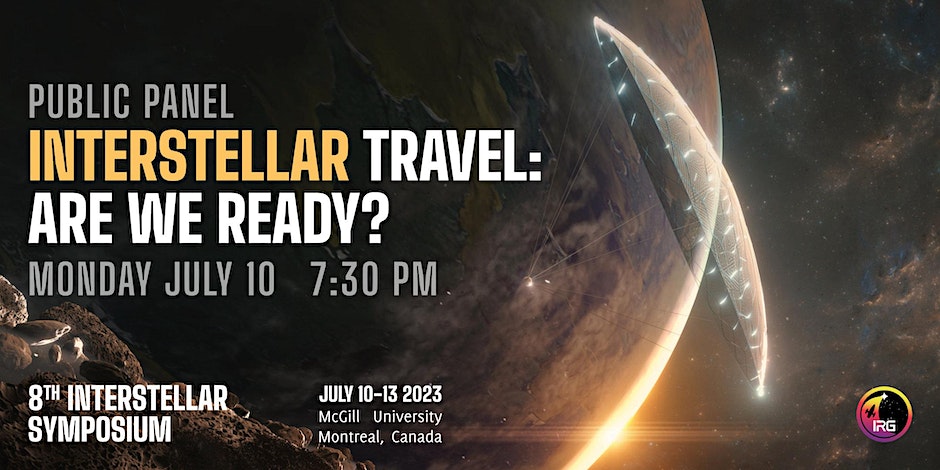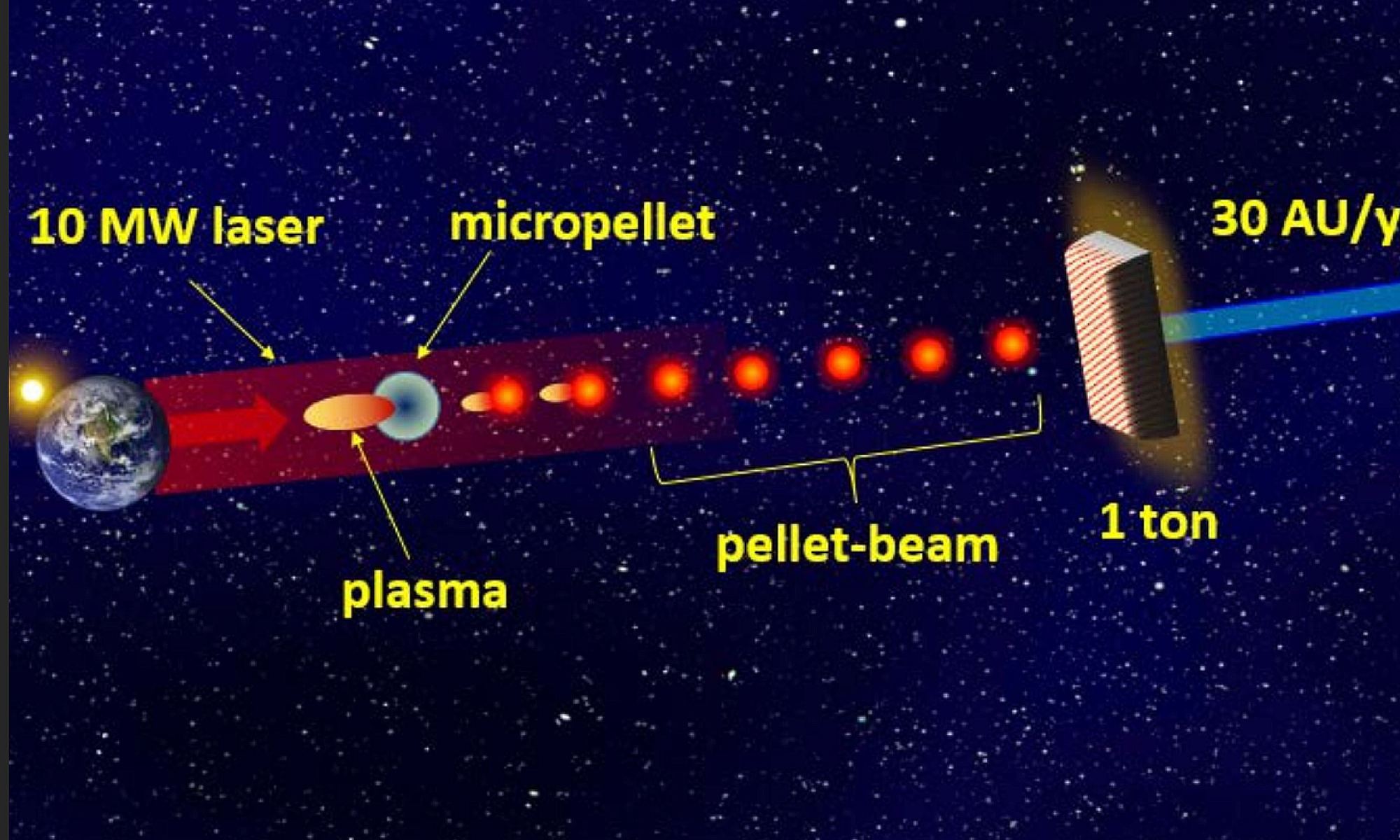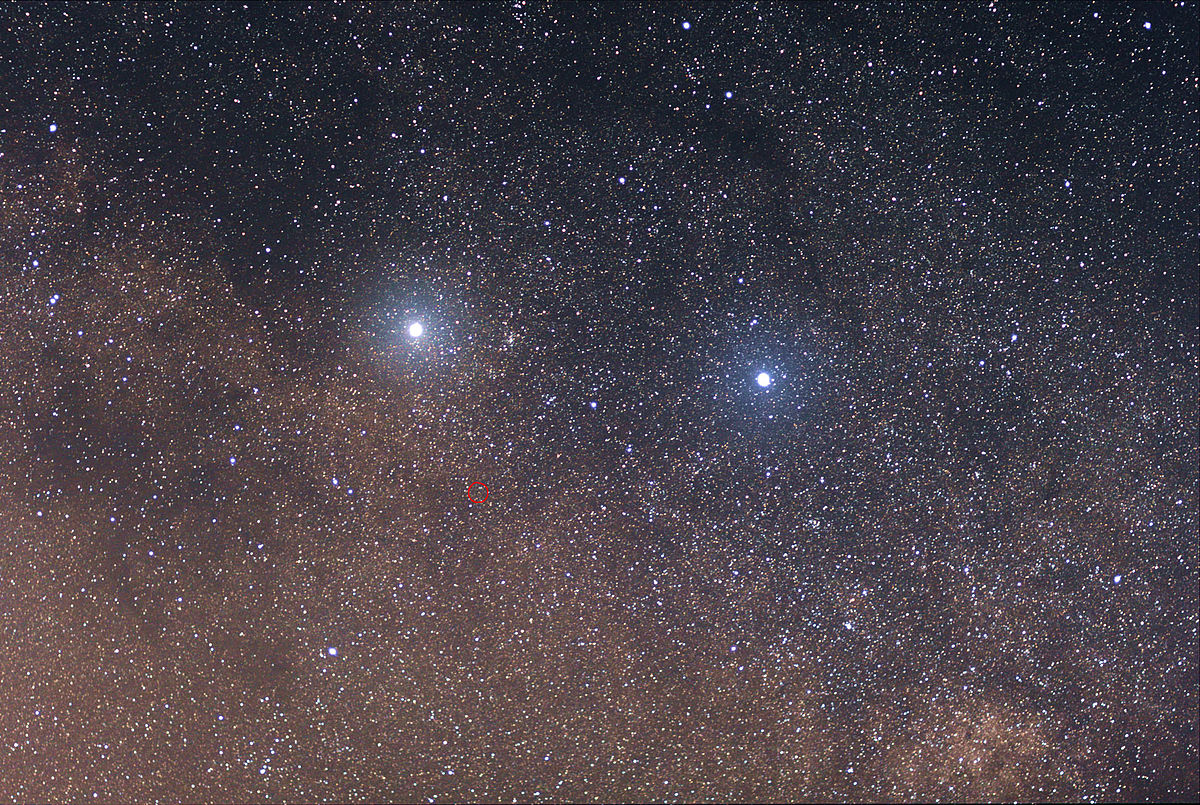If you were Captain of the first USS Enterprise, where would you go!? Humanity is on the cusp of reaching out among the stars, maybe not just yet, nor in our lifetimes but it is just around the corner cosmologically speaking. A new paper explores the new technology that could make it a reality but also carefully considers the ethical aspects. Before we make the first journeys we need to be clear about the ethical considerations too so that our exploration is sustainable and responsible.
Continue reading “The Cosmos is Waiting for us to Explore. But we Should Choose our Path Wisely.”Pushing A Probe To Alpha Centauri Using A Relativistic Electron Beam
Getting a spacecraft to another star is a monumental challenge. However, that doesn’t stop people from working on it. The most visible groups currently doing so are Breakthrough Starshot and the Tau Zero Foundation, both of whom focus on a very particular type of propulsion-beamed power. A paper from the Chairman of Tau Zero’s board, Jeffrey Greason, and Gerrit Bruhaug, a physicist at Los Alamos National Laboratory who specializes in laser physics, takes a look at the physics of one such beaming technology – a relativistic electron beam – how it might be used to push a spacecraft to another star.
Continue reading “Pushing A Probe To Alpha Centauri Using A Relativistic Electron Beam”What’s the Most Effective Way to Explore our Nearest Stars?

It was 1903 that the Wright brothers made the first successful self-propelled flight. Launching themselves to history, they set the foundations for transatlantic flights, supersonic flight and perhaps even the exploration of the Solar System. Now we are on the precipice of travel among the stars but among the many ideas and theories, what is the ultimate and most effective way to explore our nearest stellar neighbours? After all, there are 10,000 stars within a region of 110 light years from Earth so there are plenty to choose from.
Continue reading “What’s the Most Effective Way to Explore our Nearest Stars?”NASA Selects Bold Proposal to “Swarm” Proxima Centauri with Tiny Probes
Humans have dreamed about traveling to other star systems and setting foot on alien worlds for generations. To put it mildly, interstellar exploration is a very daunting task. As we explored in a previous post, it would take between 1000 and 81,000 years for a spacecraft to reach Alpha Centauri (of which Proxima Centauri is considered a companion) using conventional propulsion (or those that are feasible using current technology). On top of that, there are numerous risks when traveling through the interstellar medium (ISM), not all of which are well-understood.
Under the circumstances, gram-scale spacecraft that rely on directed-energy propulsion (aka. lasers) appear to be the only viable option for reaching neighboring stars in this century. Proposed concepts include the Swarming Proxima Centauri, a collaborative effort between Space Initiatives Inc. and the Initiative for Interstellar Studies (i4is) led by Space Initiative’s chief scientist Marshall Eubanks. The concept was recently selected for Phase I development as part of this year’s NASA Innovative Advanced Concepts (NIAC) program.
Continue reading “NASA Selects Bold Proposal to “Swarm” Proxima Centauri with Tiny Probes”Is Humanity Ready to Realize the Dream of Interstellar Travel?

For generations, humans have dreamed, speculated, and theorized about the possibility of journeying to distant stars, finding habitable planets around them, and settling down. In time, the children of these bold adventurers would create a new civilization and perhaps even meet the children of Earth. People could eventually journey from one world to another, cultures would mix, and trade and exchanges would become a regular feature. The potential for growth that would come from these exchanges – intellectually, socially, politically, technologically, and economically – would be immeasurable.
Expanding humanity’s reach beyond the Solar System is not just the fevered dream of science fiction writers and futurists. It has also been the subject of very serious scientific research, and interest in the subject is again on the rise. Much like sending crewed missions to Mars, establishing permanent outposts on the Moon, and exploring beyond cislunar space with human astronauts instead of robots – there is a growing sense that interstellar travel could be within reach. But just how ready are we for this bold and adventurous prospect? Whether we are talking about probes vs. crews or technological vs. psychological readiness, is interstellar travel something we are ready to take on?
This was a central question raised at a public outreach event aptly named “Interstellar Travel: Are We Ready?” that took place at the 8th Interstellar Symposium: In Light of Other Suns, held from July 10th to 13th at the University of McGill in Montreal, Quebec. The symposium was hosted by the Interstellar Research Group (IRG), the International Academy of Astronautics (IAA), and Breakthrough Initiatives – in coordination with the University of McGill – and featured guest speakers and luminaries from multiple disciplines – ranging from astronomy and astrophysics to astrobiology, geology, and cosmology.
Continue reading “Is Humanity Ready to Realize the Dream of Interstellar Travel?”Universe Today Interviews Author, Engineer & Technologist Les Johnson About the 8th Interstellar Symposium

This summer, experts in fields ranging from astronomy and astrophysics to astrobiology, astrogeology, and cosmology all convened at the University of McGill for the 8th Interstellar Symposium: In Light of Other Suns. In partnership with McGill, this event was hosted by the Interstellar Research Group (IRG), the International Academy of Astronautics (IAA), and Breakthrough Initiatives. Between July 10th and 13th, students, press, and space enthusiasts attended presentations and outreach events that addressed the big questions on interstellar spaceflight exploration.
To learn more, Universe Today sat down with NASA technologist, author, and engineer Les Johnson who attended the event and hosted many of its panel discussions. This included the public outreach event “Interstellar Travel: Are We Ready?” where he and a panel of experts (including Alan Stern, AJ Link, Prof. Philip Lubin, Erika Nesvold, and Trevor Kjorlien) discussed the technological, social, and ethical dimensions of traveling nearby stars. He was also a featured guest for the Science Fiction Author Panel, where he was joined by fellow SF authors Karl Schroeder, Eric Choi, and Sylvain Neuvel.
Continue reading “Universe Today Interviews Author, Engineer & Technologist Les Johnson About the 8th Interstellar Symposium”A Novel Propulsion System Would Hurl Hypervelocity Pellets at a Spacecraft to Speed it up

Today, multiple space agencies are investigating cutting-edge propulsion ideas that will allow for rapid transits to other bodies in the Solar System. These include NASA’s Nuclear-Thermal or Nuclear-Electric Propulsion (NTP/NEP) concepts that could enable transit times to Mars in 100 days (or even 45) and a nuclear-powered Chinese spacecraft that could explore Neptune and its largest moon, Triton. While these and other ideas could allow for interplanetary exploration, getting beyond the Solar System presents some major challenges.
As we explored in a previous article, it would take spacecraft using conventional propulsion anywhere from 19,000 to 81,000 years to reach even the nearest star, Proxima Centauri (4.25 light-years from Earth). To this end, engineers have been researching proposals for uncrewed spacecraft that rely on beams of directed energy (lasers) to accelerate light sails to a fraction of the speed of light. A new idea proposed by researchers from UCLA envisions a twist on the beam-sail idea: a pellet-beam concept that could accelerate a 1-ton spacecraft to the edge of the Solar System in less than 20 years.
Continue reading “A Novel Propulsion System Would Hurl Hypervelocity Pellets at a Spacecraft to Speed it up”Lightweight Picogram-Scale Probes Could be the Best way to Explore Other Star Systems
Inspiration for space exploration can come from all corners. One of the most inspiring, or terrifying, sources of inspiration for some in space exploration came from computer science expert John von Neumann, who laid out a framework for self-replicating machines in a series of lectures he gave in 1948. Ever since then, scientists and engineers have been debating the advantages, and the perils, of such a system.
However, while technology has indeed advanced a long way since the 1940s, it still seems like we are still a long way from having a fully functional von Neumann machine. That is unless you turn to biology. Even simple biological systems can perform absolutely mind-blowing feats of chemical synthesis. And there are few people in the world today who know that better than George Church. The geneticist from Harvard has been at the forefront of a revolution in the biological sciences over the last 30 years. Now, he’s published a new paper in Astrobiology musing about how biology could aid in creating a pico-scale system that could potentially explore other star systems at next to no cost.
Continue reading “Lightweight Picogram-Scale Probes Could be the Best way to Explore Other Star Systems”Birds use Dynamic Soaring to Pick Up Velocity. We Could Use a Similar Trick to Go Interstellar
To stand on a coastal shore and watch how eagles, ravens, seagulls, and crows take flight in high winds. it’s an inspiring sight, to be sure. Additionally, it illustrates an important concept in aerial mechanics, like how the proper angling of wings can allow birds to exploit differences in wind speed to hover in mid-air. Similarly, birds can use these same differences in wind speed to gain bursts of velocity to soar and dive. These same lessons can be applied to space, where spacecraft could perform special maneuvers to pick up bursts of speed from “space weather” (solar wind).
This was the subject of a recent study led by researchers from McGill University in Montreal, Quebec. By circling between regions of the heliosphere with different wind speeds, they state, a spacecraft would be capable of “dynamic soaring” the same way avian species are. Such a spacecraft would not require propellant (which makes up the biggest mass fraction of conventional missions) and would need only a minimal power supply. Their proposal is one of many concepts for low-mass, low-cost missions that could become interplanetary (or interstellar) explorers.
Continue reading “Birds use Dynamic Soaring to Pick Up Velocity. We Could Use a Similar Trick to Go Interstellar”New Calculations Show That an Interstellar Bussard Ramjet Drive Would Need a Magnetic Field Stretching 150 Million Kilometres
In the 1960s, American physicist Robert W. Bussard proposed a radical idea for interstellar travel: a spacecraft that relied on powerful magnetic fields to harvest hydrogen directly from the interstellar medium. The high speed of this “ramjet” forces the hydrogen into a progressively constricted magnetic field until fusion occurs. The magnetic field then directs the resulting energy towards the rear of the spacecraft to generate propulsion.
As it’s come to be known, the Bussard Ramjet has since been popularized by hard science fiction writers like Poul Anderson, Larry Niven, Vernor Vinge, and science communicators like Carl Sagan. Unfortunately, a team of physicists recently analyzed the concept in more detail and concluded that Bussard’s idea is not practical. At a time when interstellar travel looks destined to become a real possibility, this analysis might seem like a wet blanket but is more of a reality check.
Continue reading “New Calculations Show That an Interstellar Bussard Ramjet Drive Would Need a Magnetic Field Stretching 150 Million Kilometres”





